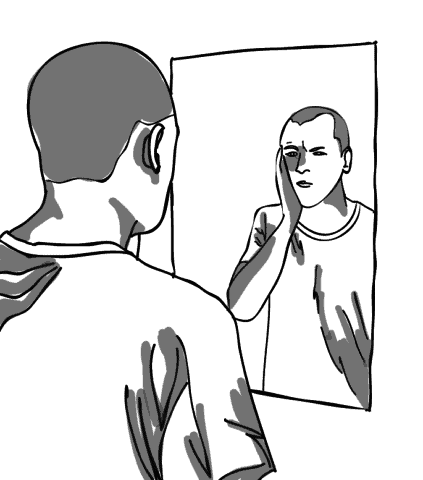While eating disorders have long been recognized as a serious medical crisis, society’s conception of them has tragically been far too gendered. Despite being regarded almost entirely as a female crisis, male eating disorders are still a serious problem — and one that appears to only be getting worse.
Before going any further, it is important to say there is no reason to diminish the role that eating disorders play in the lives of women. A look at the relationship between men and eating disorders is in no way a comparison or a competition between which demographic is more greatly affected or suffers more. It is simply an attempt to shed light on a serious problem that doesn’t get its due attention.
In case a grim refresher is necessary, eating disorders — sometimes considered the deadliest of all mental health disorders — have many serious effects on the  body. Among them can be muscle and bone density loss, memory loss and — in the most extreme of cases — even death, to name only a handful.
body. Among them can be muscle and bone density loss, memory loss and — in the most extreme of cases — even death, to name only a handful.
We can certainly then see that they are afflictions to be taken very seriously. Somehow, eating disorders are commonly seen as a women-only problem, but if one takes a moment to think further, there’s not much evidence to back-up this belief. Concepts like body shame — as well as the difficult or unattainable body images perpetuated in the media — are not problems that pick and choose between sexes, genders or any other demographics.
Men do in fact make up for a large portion of those afflicted — even if you don’t hear much about it. In January 2015, CTV reported that 25 of per cent of eating disorder cases are young men and boys, also noting that rates of binge-eating are near compatable between women and men.
The issue gets less attention due to both sexist stigmas and a lack of understanding. In June 2016, Sue Huff, executive director of the Eating Disorder Support Network of Alberta explained to CBC that eating disorders simply manifest and show themselves differently in men — making them harder to recognize and be formally diagnosed.
Still, known rates are only rising in recent years. As early as January 2013, The National Post was reporting that men constituted one in three anorexia nervosa sufferers and one in four with regards to bulimia.
As both rates and publicity rise, the overdue conversation about male eating disorders is slowly but surely shedding its stigma, and it’s not hard to see why. For one, we have seen shifts in the ideal male physique in the 21st century.
Between the polarizing body types of either the stick thin, androgynous male runway model or the hyper-muscular superhero we see on the big and small screens, there’s not much room for men to feel good about their body types.
Following an August 2016 analysis by the American Psychological Association that found body dissatisfaction was dropping among women but not men, Drew Anderson of the University of Albany offered a disheartening but important conclusion.
“We’ve set up a physical ideal that a lot of men can’t reach, and then told them they can reach it,” Anderson said. “And if they don’t, it’s somehow their fault.”
In writing this, my hope is that men with eating disorders who read this will understand and take comfort in knowing that not only are their afflictions more common than they might believe, but the stigmas are being broken down as well. Eating disorders are far from selective between groups of people and now is the time to be furthering that narrative and conversation.
Body positivity is a wonderful thing — if not a hard goal to attain. While it also seems to be a heavily gendered concept and term, it is crucially important that all people support body positivity for all others, along with healthy living and self-love. Viewing these problems as ones that pick and choose do us all a disservice.
—
Zach Tennent / Opinions Editor
Graphic: Lesia Karalash / Graphics Editor